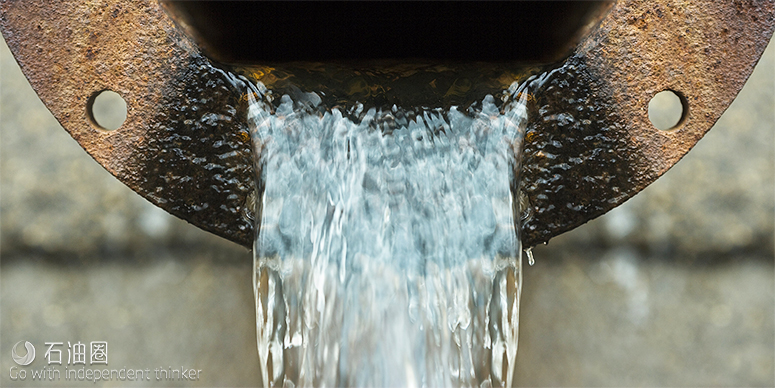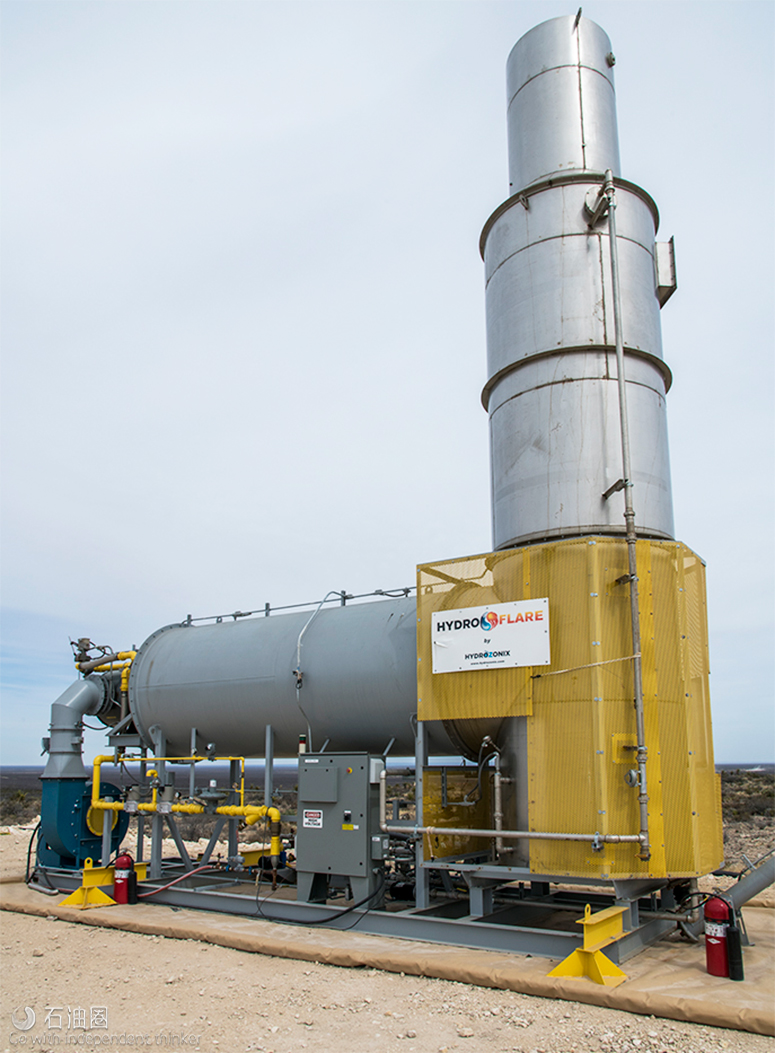It is not difficult to see why oil and gas producers are of two minds with regard to water. For the offshore explorer, it is an ever-present, perpetual motion obstacle separating technology and the prize. The onshore producer calls water both friend and foe, depending on the timing within the development process it is encountered. You don’t want to see it downhole when you are expecting a bigger bounty, but in the same beat, water plays a crucial role in the extraction of discovered hydrocarbons, especially when dealing with tighter, unconventional formations like those that exist in the shale plays of Texas, Oklahoma, Pennsylvania, Wyoming and Ohio, among others.
Water management has always been part of the business in one form or another, but in recent years, as developers moved to extract oil and gas from more remote locations of more arid areas such as West Texas and southern New Mexico, water requirements became a higher priority. Volumes are pumped downhole for fracturing operations, and volumes are reclaimed from those same operations. For operations in the Permian Basin, an average of 4 bbl of salt-ladened water is produced for every barrel of oil. Those briny volumes have to go somewhere. Historically, the solution has been to pump the wastewater back into the earth via a network of disposal wells. However, more and more states are looking closely at the disposal process and its effects on the subsurface, linking the procedure with increased seismic activity and earthquakes in regions such as Oklahoma and Texas. According to the U.S. Geological Survey, earthquakes in West Texas and New Mexico measuring at least 2.5 on the Richter scale have tripled to more than 60 per year.
Texas is reviewing its disposal well permitting process and some expect more onerous policies to be put in place to make drilling new disposal wells a difficult proposition. That doesn’t bode well for the booming West Texas oil patch, where the number of rigs drilling for oil and gas has more than doubled since 2016, according to the Baker Hughes rig count. Enough wastewater is produced from the Permian Basin annually to cover the state of Rhode Island nearly a foot deep. Water handling has added as much as 25% in some cases to overall lease operating expenses. That kind of hit to the wallet is bound to get attention. When disposal wells are pulled out of the equation, operators are forced to either truck the water out of the region for disposal or consider investing in a recycling and reuse project.
Recycle and reuse has become the solution of choice for many in the Permian. Operators like Pioneer Natural Resources, which founded Pioneer Water Management in 2014, have led the way on reuse. The company is building a water pipeline network that will run 100 miles north-to south across Pioneer’s acreage utilizing 30-in. to 36-in. diameter pipe. It will include fiber-optic cable to support field communications and feeder lines that connect to non-potable water sources, such as contracted municipal wastewater plants. Construction will continue this year in a phased approach. The system will consist of up to 20 water subsystems branched from the mainline, connecting 125 to 150 strategically placed double-lined storage ponds that will support hydraulic fracturing operations and recycling efforts in the Midland Basin. Additional operators also have embraced water management as a full-blown midstream business—Apache and Occidental, among others.
The emerging market hasn’t gone unnoticed by investors. More cash is being moved into the market via direct investments in larger companies like Select Energy Services or even smaller niche players like Clean Chemistry, a bacteria control and solids separation company, which received an infusion from Black Bay Energy Capital last summer.
Water to burn
Hydrozonix started its life as a licensee of an ozone-based technology that it then tweaked and offered to the oil field as part of a water treatment package to prevent scaling—the formation of hard water mineral deposits. However, the use of chemical scale inhibitors and the practice of blending water took care of a lot of what the company was in a position to provide. It prompted the company to look into additional technologies and diversify more broadly throughout the life cycle of oilfield water.
“You have roughly 500 million barrels of produced water generated from the Permian Basin per month,” said Mark Patton, president of Hydrozonix. “Your total demand for completions is only 200 million barrels per month. So even if you started recycling, you’re never going to recycle 200 million barrels per month. You never have all of the produced water at the right locations at the right time. Maybe a really aggressive program could get you 100 million or 150 million barrels per month, but you would still need some fresh or brackish water to supplement your source.
“But there is still excess water you have to manage that is not going into a recycling program. What do we do with that? Right now, treating to discharge to make it for agricultural reuse is a little bit expensive, though people are working on bringing that cost down. The next cheapest thing we saw that could be done was evaporation. That was the reason for the Hydroflare.”
The Hydroflare system was designed for wells in locations where gas-gathering systems do not exist and where produced water costs are high. The system burns gas that would normally be flared to evaporate flowback and produced water so it does not have to be hauled away for disposal. Solids left behind by the evaporated water are collected and conveyed to easily moved receptacles. It can help operators meet flaring reduction goals while simplifying produced water management at remote well sites. The origins of Hydroflare can be traced back to an unnamed client that had some remote wells with no access to infrastructure, which resulted in the company having to truck all of its water out of the area. The client was flaring gas as well because it wasn’t cost-effective for it to connect those wells to the gas-gathering system.
“They needed a solution,” Patton said. “If you look at the regulations rolled out under the Obama Administration, you can flare for a certain period of time, but then you had to stop and look for an alternative use. Using an evaporator that would run on that same flare gas was considered an approved alternative use. So that same gas that you’re flaring could be used for evaporation. You are still going to have dirty salt, some metals and scale mixed in that you would have to dispose of, but it would be a significantly lower volume than what you had.
“You could also not fully evaporate it; just keep it a slurry and use that as a kill fluid or as part of your drilling brine. That was a potential reuse for that material,” Patton said.
The client eventually sold the remote field and no longer had the excess water burden. The Hydroflare is idle on location in the Permian right now where Hydrozonix is conducting preliminary testing with it.
Hydrozonix’s chief offerings reside in oxidation, aeration and disinfection of produced water, or as the company calls it, the HZO trio. Its HYDRO3CIDE system uses ozone technology to treat produced and flowback water instead of liquid biocides for a chemical-free treatment process. As the company observed clients treating for bacteria throughout their entire water systems, they recognized a way to move into the production side of the business.
“The automated ozone system takes the surrounding air, strips out the oxygen and makes ozone in real time,” Patton said. “We knew we could do that and drop people’s cost. We also saw that the same system could be used in recycling programs. So we started rolling out that new product.
“Once you treat water and you decide you’re going to reuse it or recycle it, you store it in big volumes. Storing it in big volumes and just leaving it sit for a long period will allow bacteria to re grow. Aeration systems became a nice, simple way to distribute air. The oxygen in the air acts as a mild oxidizer and it starts to maintain the fluid disinfection. It provides very little additional treatment, but it prevents the bacteria from growing out of control. Think of it as preserving your treatment.”
He continued, “So we started to see that if you optimize what happens at the wellhead, tank batteries and gun barrel systems, you have eliminated most of your oil and solids, so we were able to add an automated treatment system that can save clients at least 60% in their chemical program for bacteria control. If we aerated that water after it has been treated by oxidation, that becomes your whole recycling program.”
After ozone treatment and aeration, the third leg of the trio is an On-The-Fly oxidation system that disinfects water and removes iron and sulfides without chemicals that can be incompatible with frac fluids.
Hydrozonix has 15 installed systems right now, which is just over 500,000 bbl/d of capacity. In addition, the company has 12 portable trailers that are used for on-the-fly disinfection.
“We build two to three systems per month at our facility in Greeley, Colorado,” Patton said. “We tried to build at our facility in Odessa [in Texas], but we quickly outgrew our operations there. It is very difficult to find skill trades in the Permian right now. We were having difficulty finding the right people … and when you do find them, they are expensive. We soon realized that we were flying people into Odessa from Colorado already. It just made sense to move our assembly plant to Colorado. We did that back in May [2018]. We are also modernizing our old fleet throughout 2019.”
More than 90% of the company’s business resides in West Texas; however, discussions are underway with a number of companies in the Oklahoma Scoop and Stack regarding recycling programs.

 石油圈
石油圈

